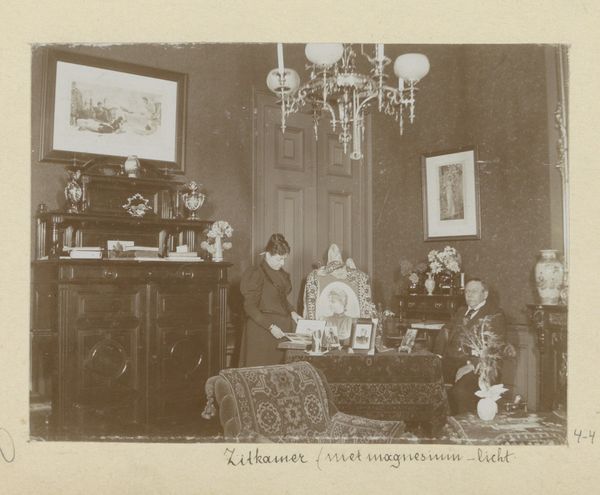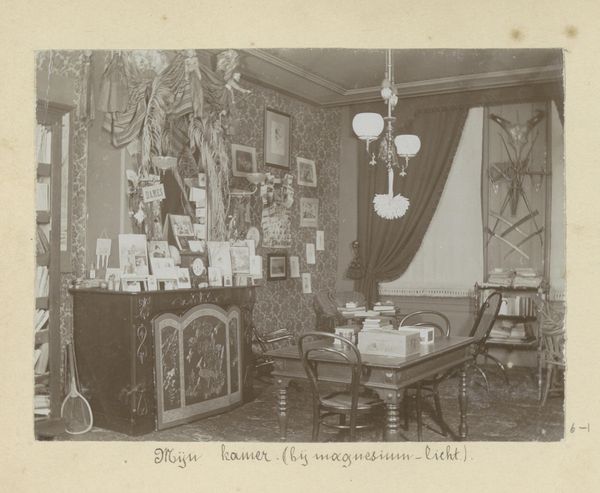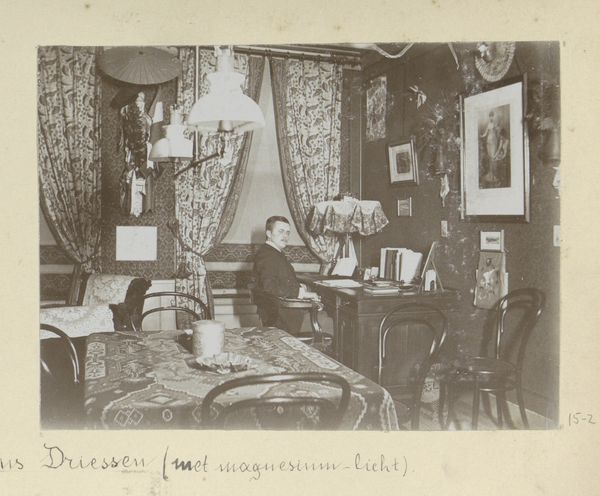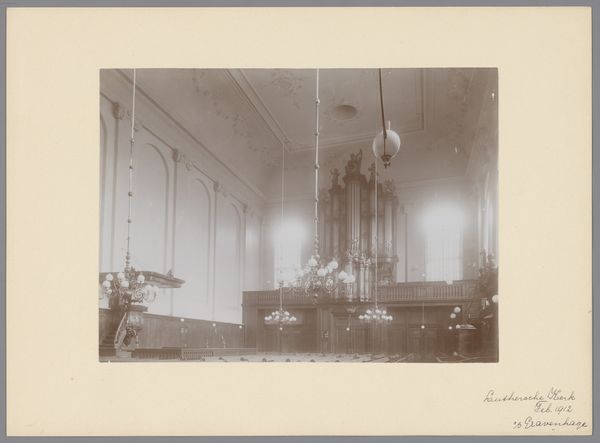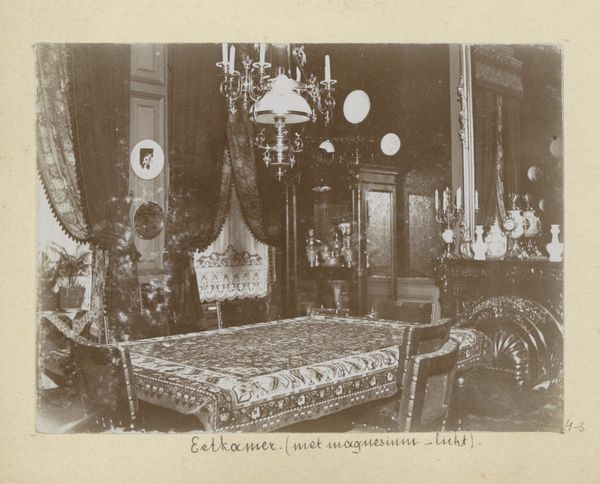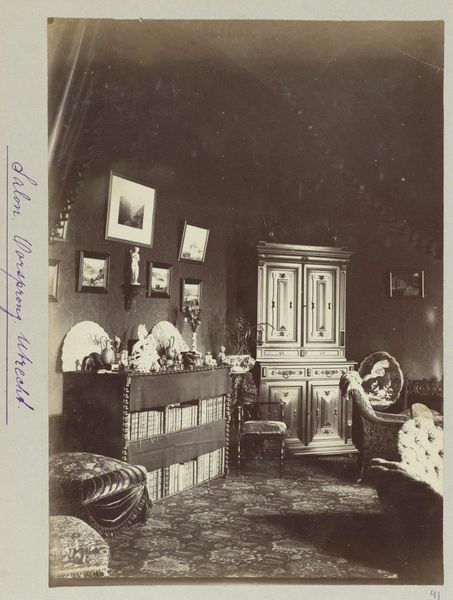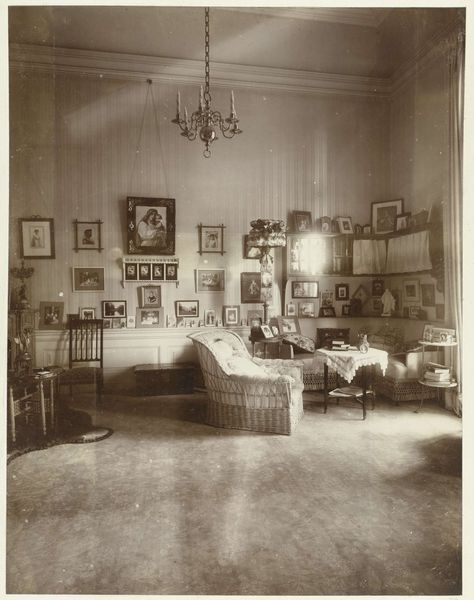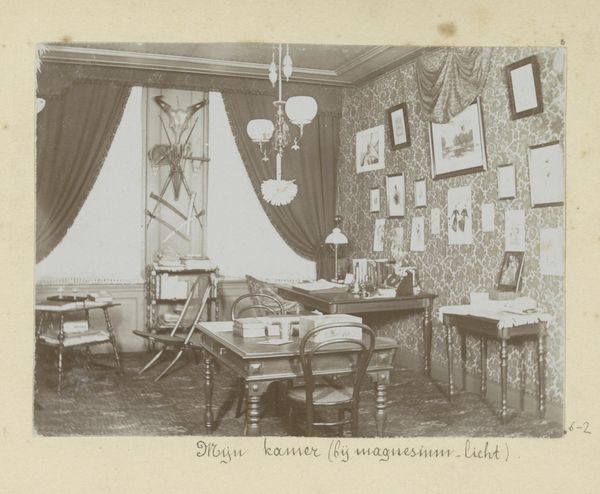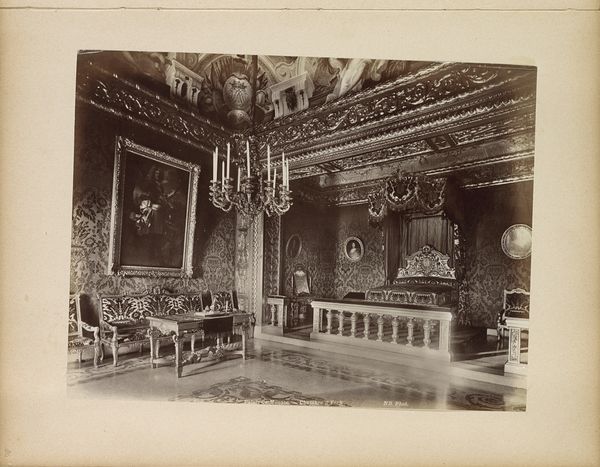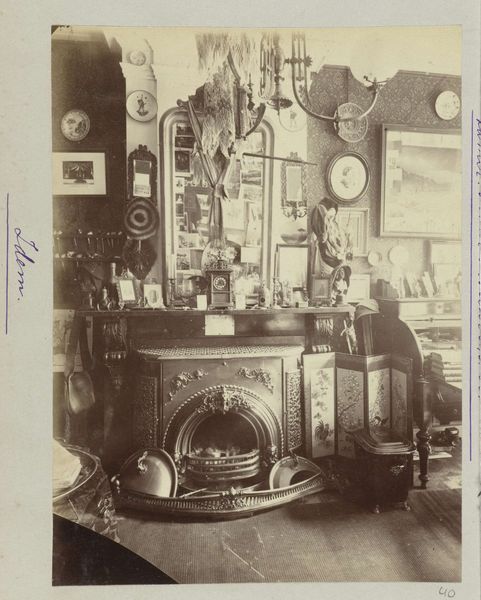
photography, gelatin-silver-print
#
portrait
#
still-life-photography
#
photography
#
gelatin-silver-print
#
realism
Dimensions: height 80 mm, width 109 mm
Copyright: Rijks Museum: Open Domain
Editor: This photograph, "Interieur van de zitkamer," taken before 1894 by Hendrik Herman van den Berg, gives us a glimpse into a bygone era. It’s a gelatin-silver print depicting a rather ornate sitting room. The lighting seems peculiar, almost stark. What immediately strikes you about its composition and tonal qualities? Curator: Indeed, the photographic print exhibits a structured organization within its spatial confines. Notice how the composition employs a distinct arrangement of horizontal and vertical elements. The rectilinear forms of the furniture – the cabinet, the table – juxtapose with the more fluid, curvilinear shapes found in the chandelier and floral arrangements. The subdued tonality, a product of the gelatin-silver process and, perhaps, early photographic lighting techniques, unifies these disparate forms. Does this tonal range, with its subtle gradations of light and shadow, evoke a specific feeling or mood? Editor: It does feel muted, reserved perhaps? There’s a stillness. But how much of that is due to the limitations of the photographic technology of the time? Is the aesthetic intentional or simply a result of the available methods? Curator: An astute observation. We might consider the “technical limitations” not as hindrances, but as integral components of the work's aesthetic vocabulary. The inherent characteristics of early photography – the limited tonal range, the challenges in capturing motion, the emphasis on static subjects – contribute to the photograph's unique visual language. Observe, for instance, the almost painterly quality of the light and shadow, rendering textures and forms in a way that blurs the boundaries between photography and painting. Are there elements beyond this play of light and form that capture your attention? Editor: Now that you mention it, the arrangement of objects atop the cabinet draws my eye. The repetition of rounded forms - vases, busts, framed artworks - creates a rhythm, a visual echo throughout the room. I hadn’t consciously noticed that before. Curator: Precisely. By attending to these formal relationships, we begin to decode the internal logic of the image. It moves beyond mere documentation and speaks to the deliberate ordering of the visual world. Editor: This exploration of form and composition is insightful. I initially viewed this as simply a record, a snapshot of the past, but now, thanks to your formalism perspective, I understand the active artistic choices present. Curator: And conversely, this engagement highlights that so called technical and historical limitations shape visual artistry.
Comments
No comments
Be the first to comment and join the conversation on the ultimate creative platform.
